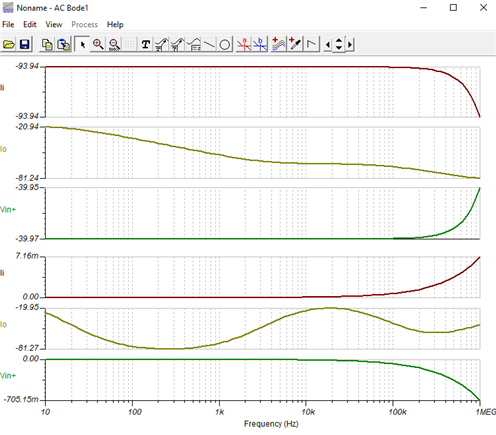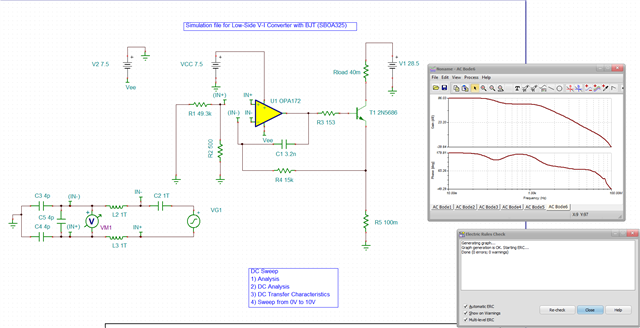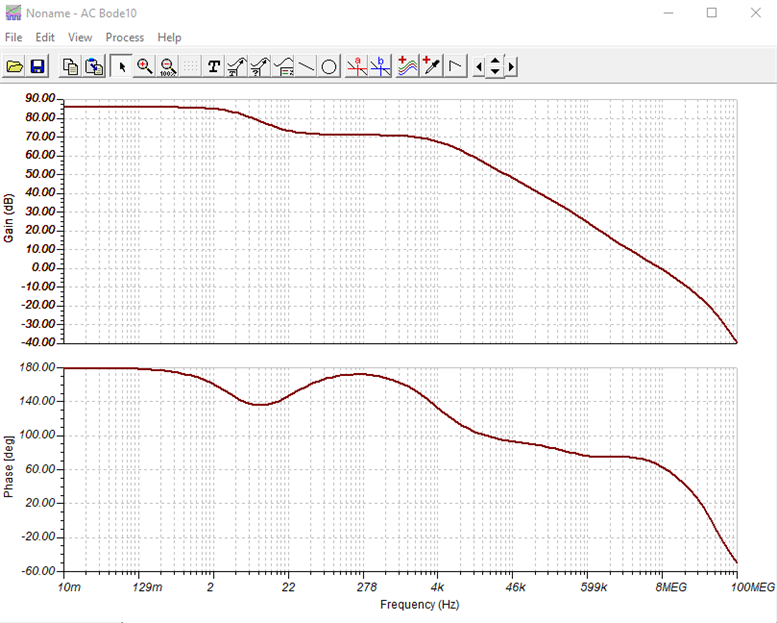Other Parts Discussed in Thread: TINA-TI, TLV9102
Hello,
I just came across CIRCUIT060046: "High-side V-I with bipolar junction transistor (BJT) circuit"
I noticed that the description reads "This low-side voltage-to-current (V-I) converter delivers a well-regulated current to a load..."
I wonder what to call this circuit correctly: a high-side load or a low-side switch circuit?
Anyhow, there's a design document available for this circuit, SBOA325. Page 3 reproduces the results of an DC as well as an AC analysis run using Tina-TI.
I downloaded the model and could re-generate the "DC Simulation Results" as shown in SBOA325.
However, I failed to re-generate the "AC Simulation Results". The AC analysis results look rather strange:

What am I doing wrong? I guess I have to manually add the proper curves using the post-processor feature.
Please advise.
Thanks.
Dan





